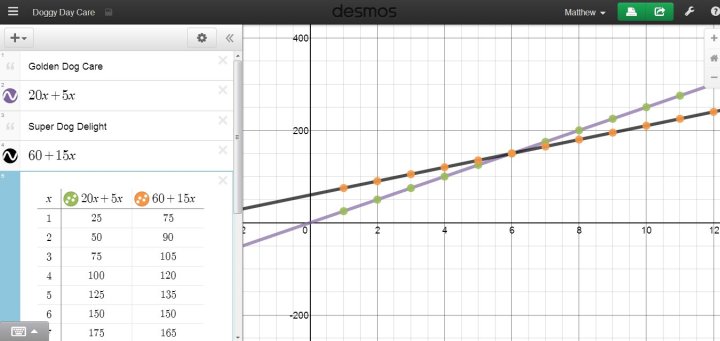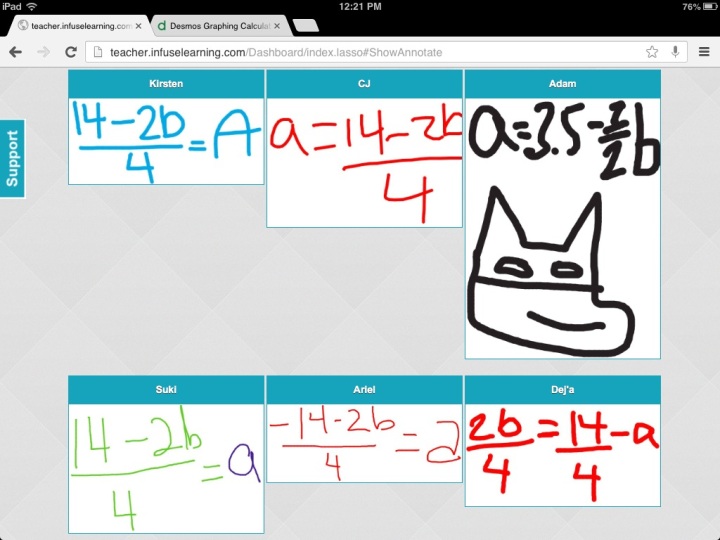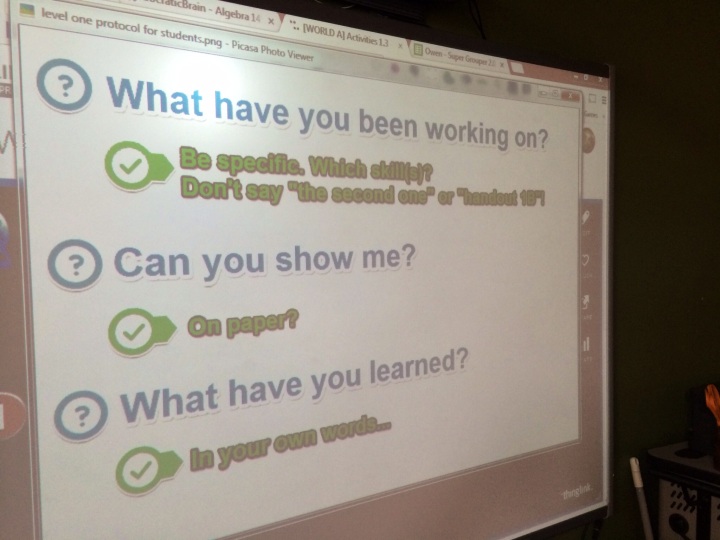It has been way too long since I’ve blogged, but from what I’ve been reading lately I am not alone on this. Like many others, I have been feeling a little overwhelmed this year. It is tough trying to keep up with new curricula in Algebra and Physics, and I’m basically constructing my textbook as I go too. </whine> So far, I’m happy with the way things are going in both classes. In Algebra, I’m using the learning targets that I wrote over the summer (modifying as I go of course) and I’ve been using a bunch of the handouts from Connecticut’s model Alg 1 curriculum (click “CSDE” then “Mathematics” then “CT Common Core Alg 1”, thanks to Jen Silverman for sharing that resource with me!). If you teach Algebra I or MS Math, I’d give them a look at least. (Edit: guest password is CSDE.)
I’ve also been writing a class blog to keep in touch with students and parents. That blog also serves as a model for my students when they finally start their blogs (we have them set up but haven’t started posting yet). I’m thinking maybe we should do an Explore-MTBoS-style series of missions! Gotta get to work on that with all my free planning time. 😉
A highlight for me this year has been doing a lot of problem based lessons. Some I got from the CT curriculum, but mostly from online sources like MARS, 101qs.com, or the twitterblogosphere in general. I’ve really been enjoying this type of lesson and I think most of my kids have too. Many parents told me at back to school night that their kids were enjoying the class. However, I’ve found that many kids are struggling to make the connection between the lesson and the assessment (I have the same problem with modeling instruction in physics). My worry is that if I don’t come up with some fixes for this problem, I’ll revert to old ways and abandon the problem based course design (which I think is going well otherwise). Anyway, here’s an example of my assessment scheme:
First, the lesson handout:
So, we did this handout. As a class, we noticed that the cost would depend on whether or not the dog needed a bath each visit. We decided that it was a dirty dog, so yes it did need a bath every time. Then, we wondered which would be the better deal and decided that it would depend on how many times you visit the place. With some guiding questions, groups of kids modeled the scenario, made some nice TI and Desmos graphs and most decided that they should go with Super Dog Delight because it would be cheaper in the long run.

Ok, so one of the skills I am looking to assess after this activity is solving equations with variables on both sides. Here’s how I did that:
1. Formatively assess during the activity. Notice the different methods for writing and solving equations, point them out to the whole class. Have students demonstrate their methods. Celebrate mistakes!
2. Multiple choice summative quiz. 5 questions, randomly generated by Socratic Brain (according to my specifications). Students must get 5/5 twice (on different days) for full credit. They can take the quiz as many times as they need to. Questions look like this:

3. Screencast! Our school got an iPad cart (20), so I checked it out and had students make screencasts explaining their solutions to a particular equation. Here’s an example of one. He made some nice mistakes in there. I gave feedback, but I’d love to work out a system where they view and critique each other’s screencasts (working on it!). We also used Infuse Learning to practice literal equations:

4. The Exam. So, to assess this skill one more time, I have a scenario similar to the Dog Spa problem on their quarter exam. My strategy on the Algebra exam is inspired by a History teacher I had in high school who would give us essays on every test, but let us know the topics beforehand so that we could prepare. I decided to try something similar by giving the students the scenarios, but not the questions. Here’s what I showed them:
And here’s the questions I asked:
And I gave them some class time to prepare for them. I told them to think of questions they have and how they might go about answering those questions. I also told them to think about what questions I might ask and how they would answer those. Feelings about the exam were mixed. Some students were excited that I was giving them a peek at the exam, but others were confused as to how to proceed because of the lack of questions. I think the latter group of kids is the group I referred to earlier. They’re the ones who are not making the connections between the activities we do in class and the skills required for the assessments. Like maybe they participate in the group activity by making a graph, but then never learn about writing an equation (“my part’s done here”). Now that I’m thinking about it though, it seems like the solution might be more problem solving activities, not less. That would mean more chances for that kid to write some equations, right?
So why the title “Function notation can wait”? Well, I started the year with my Unit 1 called “Modeling with Functions”. But, I found that my students were thrown off by the notation and it was hurting the learning process. For instance, we did the checkerboard border problem 3-act-style (thanks to Dan Meyer for the fancy graphics). Here’s a few examples of what they came up with:


They explained how they saw the pattern very well and then also used function notation in their equations. But when I asked them to explain why they wrote the equation that way, I got “Because that’s how you did it”, and that’s not what I want! They should use function notation because it’s useful as a labeling tool, not because I said so. Other groups wrote the equation as (# of blue tiles) = 4*(width of smaller square) + 8, which I like much better anyway. I don’t want to confuse anyone when they clearly get the idea conceptually.
So, new title for Unit 1: Patterns and Modeling. Function notation can wait.




















